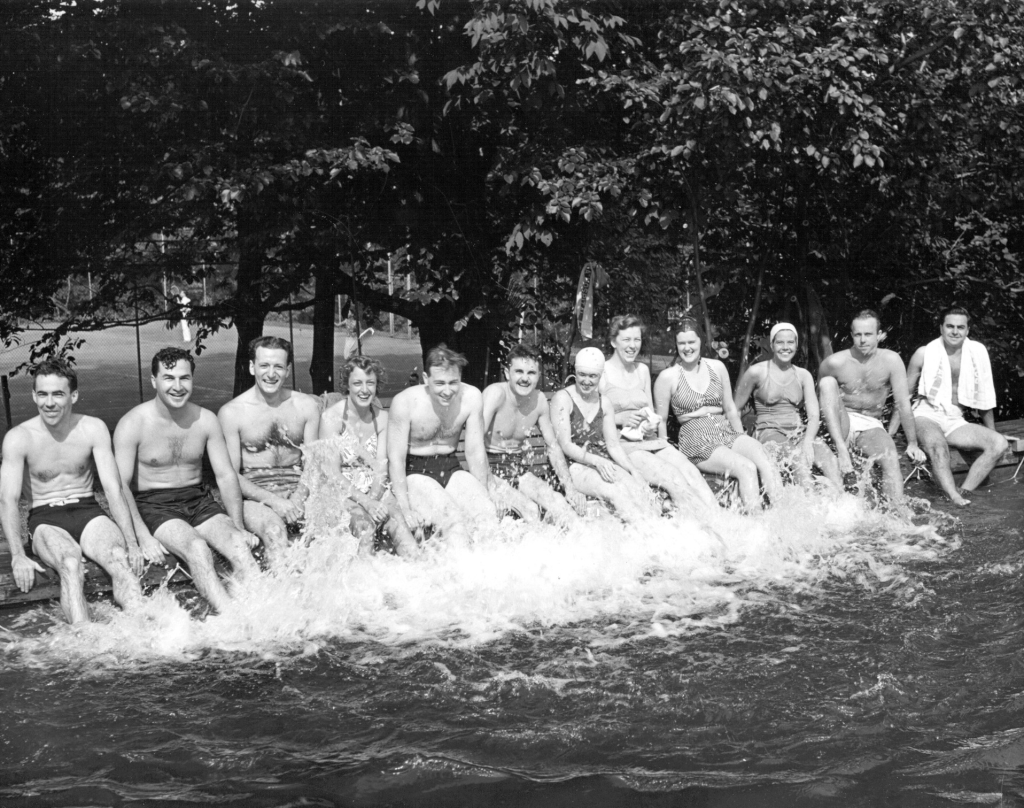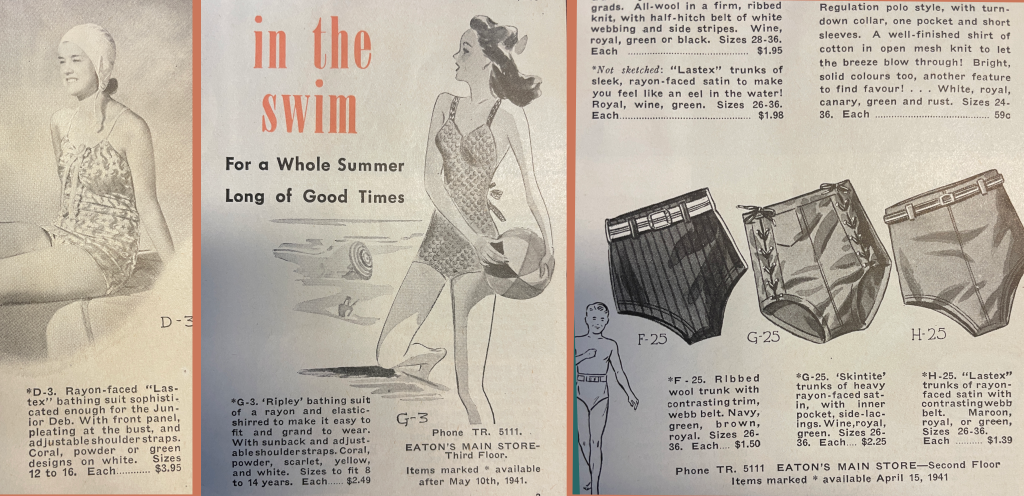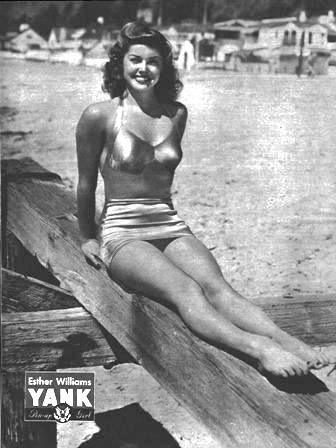“What a chorus line we’d make in Esther Williams’ movies!”
Thanks to Sharon Cohen for this month’s caption. We asked you to date this photo based on the swimsuit style and many of you were very close! Thanks to all of you who took a guess at the date based on the swimwear in this photo. It was taken in 1942!

These stylish swimmers are flipping their fins on the edge of the outdoor pool that was tucked in between the Royal Victoria Hospital site and Mount Royal Park. The pool was originally built for hospital staff and patients to use for both recreation and rehabilitation. Although it is no longer in operation, until 2014 swimmers enjoyed the sun, water, and shade poolside, tucked away from the noise of the city at McGill’s so-called secret pool.
Swimsuit style, particularly for women, changed quickly in the twentieth century. The invention of “elastic yarn in the 1930s created a fabric that clung to the body and enabled risqué designs.“1 Selections from the 1941 Eaton’s spring and summer advertise swimsuits for young boys and girls using “Lastex” and rayon, along with more traditional ribbed wool. Who wouldn’t want a pair of “‘Lastex’ trunks of sleek, rayon-faced satin to make you feel like an eel in the water!” With these stretch yarns necklines went down and hemlines went up, making swimming costumes that combined style and functionality in varying degrees. The size of swimsuits continued to shrink during the war years due to fabric rationing in North America.2 While one-piece swimsuits were still the most popular style in the 1940s, two-piece swimsuits began baring midriffs, to the delight of many and the horror of others. The striped ensemble pictured fourth from the right in the above photo is a great example of the style of the 1940s two piece: a high-waisted skirt bottoms with a mid-riff baring but full coverage top. Also of note are the halter necklines on at least two of the women’s suits.

The suits pictured here are full-coverage and quite conservative compared to the scantier coverage of the modern bikini. The Bikini was not introduced until a few years later, when two French designers Jacques Heim and Louis Réard introduced first the Atome (1946) and then the Bikini (1947). The latter, whose branding and name we know today, was made from “just 30 inches of fabric.”3 Waste not, want not!
The men’s suits are more difficult to date, however, one thing that both the men’s and women’s suits have in common is a higher waistline. For all, the waistline of the suits sits very nearly at the natural waist, which is higher than one might think. For the women’s suits, the two pieces did not expose the navel or below and the men’s suits came nearly as high, with many still featuring a belt.
Thanks to Sharon Cohen for the era-appropriate caption for this photo. In the 1940s, Esther Williams did a great deal to popularize swimwear styles in a series of successful Hollywood aquamusicals. Williams was a competitive swimmer who went one to be a Hollywood starlet in the niche world of swimming feature films. Sequins, synchronized swimming, and spectacular splashes made the films hugely popular.

For further reading:
- The Swimsuit: Fashion from Poolside to Catwalk, by Christine Schmidt. McGill Library access
- The Swimsuit : A History of Twentieth-Century Fashions by Sarah Kennedy.
For an excellent pictorial history by Florida Memory, visit “A Brief History of the Bathing Suit.” Floridiana, 2015.
This image choice was inspired by En Route, the current exhibition on Quebec travel and tourism on display in the McLennan Library Building. The exhibition is free and open to all during building opening hours. https://mcgill.ca/x/UQn
- Edwards, Lydia. “The Erotic Theatre of the Pool Edge: A Short History of Female Swimwear.” The Conversation, January 15, 2020. http://theconversation.com/the-erotic-theatre-of-the-pool-edge-a-short-history-of-female-swimwear-127902.
- ELLE. “The History of the Bikini,” April 23, 2012. https://www.elle.com/fashion/g2906/the-history-of-the-bikini-654900/.












Leave a Reply
You must be logged in to post a comment.